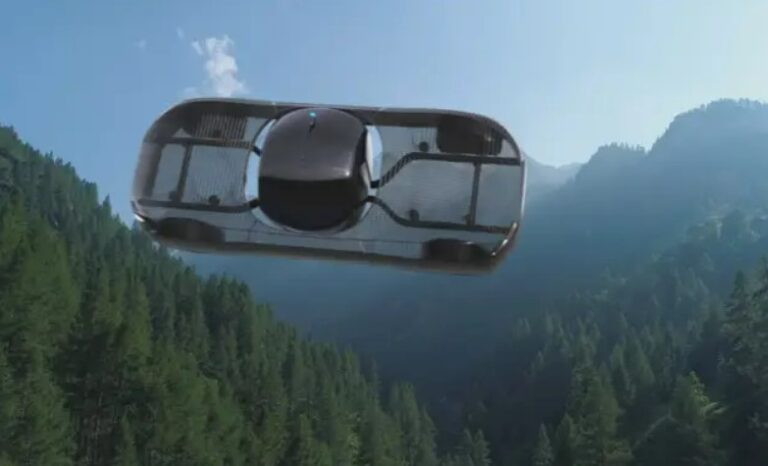Flying cars prototype, also known as Vertical Take-Off and Landing (VTOL) vehicles, represent a fascinating blend of automobile and aircraft technologies. These innovative vehicles aim to revolutionize urban transportation by providing a new dimension of mobility, allowing people to move seamlessly between the roads and the skies.
Early 20th-century aviation and automotive engineering pioneers first began to envision a world in which personal automobiles could fly when they first came up with the idea of flying cars.
Early prototypes were created by inventors like Glenn Curtiss and Molt Taylor in the 1940s and 1950s, but restricted technology and regulatory restrictions prevented widespread development.
Table of Contents
Key players in the development of flying cars
The challenge of creating working prototypes for flying cars has been taken on by numerous businesses and entrepreneurs.
- A Dutch company called PAL-V developed the world’s first certified flying automobile, the PAL-V Liberty, which can transform from a three-wheeled car to a gyroplane.
- Slovakia-based AeroMobil has created a svelte and opulent flying car that fuses a road car with a fixed-wing aircraft.
- Lilium: A German startup with a vertical takeoff and landing electric aircraft known as the Lilium Jet that has potential ridesharing uses.
- Terrafugia: An American business that created the Transition, a legally permitted airplane with foldable wings that can be used as a vehicle.
- EHang: This Chinese business acquired notoriety for their autonomous passenger drone, the EHang 184, which is intended for urban air mobility.
Read also: First futuristic flying motorcycle available from 2023
The features of flying cars
Design
Prototypes of flying cars are designed to function as both aircraft and vehicles that can travel on land. Usually, they include the following design elements:
- Flying cars’ convertible designs enable them to switch between road mode and flight mode, enabling vertical takeoff and landing.
- Compact Size: Most prototypes are made to be small and agile, making it easier to move them both on the ground and in the air.
- Aerodynamic Shapes: To reduce drag during flight and maximize energy efficiency, flying cars have aerodynamic forms.
- Foldable Wings: To make it easier to drive on conventional roads, several prototypes incorporate foldable wings or rotors that can be retracted.
Propulsion mechanisms
Prototypes of flying cars use a variety of propulsion technologies, each with advantages and disadvantages:
- Battery-powered electric motors have grown in popularity because they are more environmentally friendly, require less maintenance, and operate quietly.
- Traditional jet engines are capable of enabling high-speed flying, but they frequently come with increased fuel consumption and noise levels.
- Hybrid Systems: Some prototypes strike a balance between performance and efficiency by combining electric motors and internal combustion engines.
Security factors
When creating flying automobile prototypes, safety is the top priority. Different safety features are implemented by designers and engineers, such as:
- Flying cars frequently incorporate redundant power and flight controls systems to ensure safe operation in the event of component failure.
- Emergency parachute systems that can be launched in urgent situations are included in some prototypes.
- Collision avoidance: modern sensors and systems for avoiding collisions assist keep aircraft at a safe distance from one another and other objects in the air.
Impact on transportation potential
Transportation may undergo considerable changes if flying car prototypes are successfully adopted by society:
- Flying cars have the potential for urban air mobility (UAM), where on-demand air taxi services could ease traffic and shorten travel times in crowded areas.
- Commute Efficiency: By avoiding clogged highways and utilising the airspace for quicker point-to-point transport, short-haul commutes could be significantly enhanced.
- Flying vehicles may improve accessibility to remote and difficult-to-reach areas, particularly in areas with poor infrastructure.
- Reduced Environmental Impact: Flying cars driven by electricity might help cut greenhouse gas emissions and promote more environmentally friendly transportation in the future.
Obstacles of flying cars
Although flying car prototypes have advanced significantly, they still face a number of obstacles before becoming a common form of transportation:
- Safety concerns: Given the difficulties in managing air traffic and the possible risks of flying over populated areas, ensuring the safety of flying car operations is essential.
- Regulatory obstacles: It will involve cooperation between governments, aviation authorities, and industry partners to integrate flying cars into current airspace laws and create new frameworks for urban air mobility.
- Developing the requisite infrastructure is essential for operating a large fleet of flying cars, including areas for takeoff and landing, charging stations, and maintenance facilities.
- Public acceptance: For flying cars to be successfully adopted, it will be essential to persuade the general public of their benefits, effectiveness, and safety.
The future of transportation
A new chapter in the history of transportation has begun with the appearance of flying automobile prototypes. The day when flying automobiles are a common sight in the skies may not be too far off as innovation and technology continue to push the limits of what is possible.
The progress gained thus far is a monument to our inventiveness and our unwavering ambition to explore new horizons in mobility, even if there are still substantial obstacles to be overcome. In the future, there will be a level of freedom and efficiency in transportation that has never been possible before. The idea of flying automobiles is now closer to reality than it has ever been.
Read also: The taxi-drone becomes a reality, by 2024 Volocopter will connect Rome and its airport












